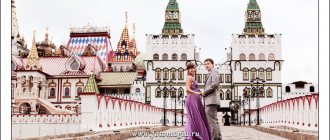The story of a good thing called marriage
Before the revolution, marriages took place only in churches; registry offices simply did not exist. In 1918, a provision was approved according to which acts of civil status were to be carried out exclusively by civil authorities. The management of the Civil Registry Offices (Civil Registration Departments) was carried out by the NKVD of the RSFSR. Until the end of the war, it was not at all necessary to register a marriage in the USSR: immediately after the Revolution, civil marriage was legalized in the USSR.
For a family to be officially recognized by the state, it had to meet three basic parameters: the spouses must live together, have a common household, and this must be recognized by third parties in correspondence. Marriage registration became mandatory only in 1944. Interestingly, until 1953, Soviet citizens did not have the right to marry foreigners.
Article on the topic
The grooms cry too. One day with a registry office employee
Why are wedding locks needed?
The ritual with locks, which is carried out on the day of the creation of a new family, comes from literature. In the novel by the popular Italian writer Federico Moccia, “Three Meters Above the Sky,” it is written how the heroes wrapped a chain around a bridge pillar, hung a lock on it, and threw the key into the water. So the couple vowed eternal love to each other. The described ritual touched readers so much that it became popular among couples around the world.
Today, hanging a lock on a bridge, railing, pillar, trees or other suitable places is an integral part of every wedding ceremony. There is a second theory of the origin of this tradition. Ethnographers claim that many years ago in Rus' there was a custom to close the barn lock for the happiness of the newlyweds. The key was given to a person respected in society or thrown away. The castle itself was not hung, but buried in the ground. This is the only difference between the ancient tradition and the current one.
Types of castles
When the ritual first gained popularity, newlyweds used simple accessories that were sold in markets and hardware stores.
Nowadays, for couples who pay special attention to wedding traditions, special locks of different shapes and sizes are made (from miniature, which fits in the palm of your hand, to huge). The item can even be made to order
Wedding clasps in the shape of one or two hearts, round, and oval are very popular. Almost all newlyweds engrave them with names or initials, memorable dates, and symbolic words. The choice is huge, it all depends on the couple’s imagination, preferences and budget. Buying a finished product will be as cheap as possible. For a small surcharge, it will be engraved. Manufacturing with an exclusive design will cost more.
Decor
With a little effort, you can turn an ordinary castle into a wedding one. The simplest way is to make inscriptions on the surface with acrylic paints and fix them with varnish. You can complement the design by gluing beads, rhinestones, cold porcelain, and fabric flowers. Metal products decorated using the decoupage technique or painted with oil paints look great
It is important that the design of the castle matches the theme of the wedding and is of the appropriate color
How to use
Initially, locks were hung on the railings of a bridge passing over a reservoir. There is such a place in almost every city. If it is not in your locality, then there is another secluded corner chosen by newlyweds. Common places for hanging locks:
- Iron trees and other metal structures. As a rule, these are located in squares and parks.
- Railings of a bridge passing over a pond. It is believed that it connects the couple, like two opposite shores.
- A memorable place for the newlyweds themselves. You can hang a wedding padlock where you met, had your first date, or just like to go for walks.
It is very important to perform the ritual correctly. Often time is devoted to this during the wedding walk and photo shoot after the ceremonial painting, before the banquet
You need to lock the lock together, holding hands. The key is usually thrown into a pond. If there is no such thing, some place where no one can get it will do. It is not customary to keep the master or spare key for yourself. This breaks tradition and shows that the lock can always be removed. This means that the couple’s relationship can be dissolved.
Show yourself, look at others
The wedding walk is a relatively new tradition for Russia. In the USSR, after painting in the registry office, newlyweds most often went straight to the festive table. Today, when the wedding industry has become a profitable business, newlyweds can take a walk around the city, during which a professional photographer will take pictures for the family album. Very soon this became a tradition, and “wedding places” appeared in Moscow.
Wedding festivities in Moscow. Photo: RIA Novosti / Mikhail Fomichev
Red Square is the most popular place for wedding walks. Often on Vasilievsky Spusk there is a line of white limousines with two rings on the roof, and couples wait in line to have their photos taken near the Kremlin walls. Most often, newlyweds head to the observation deck of the Bolshoi Moskvoretsky Bridge, to St. Basil's Cathedral, the Spasskaya Tower or the Cathedral of the Kazan Icon of the Mother of God. The Tsaritsyno estate is also popular with newlyweds: there are many beautiful places to take photos against. For example, a large bridge over a ravine, a figured bridge, a bread house, as well as a fountain and a park.
The newlyweds walk in the palace and park ensemble of Tsaritsyno. Photo: RIA Novosti / Dmitry Korobeinikov
Old Arbat is the heart of Moscow. Pushkin , Blok, Chekhov, Yesenin, Mayakovsky lived and visited here of the Golitsyns, Tolstoys, and Gagarins were located . After the street became pedestrian in 1986, young people began to gather here. Then Arbat acquired its own new glory, associated with modern poets, dissidents and informal culture. Today you can meet musicians and artists, poets and just eccentrics here. Natalya Goncharova on Arbat , where the newlyweds like to take pictures. It is possible to lay a stone with the names of the spouses in the paving stones of the street.
Article on the topic
An oasis of coolness in a hot city. The most beautiful Moscow fountains
Founded in 1524 by Vasily III, the Novodevichy Convent is dedicated to the Most Holy Theotokos Hodegetria, which translates as “mentor” or “guide”. It is believed that it opens the path to a new life for newlyweds and grants the couple the protection of the Mother of God herself. In addition, the monastery has impressive architecture, and many couples arrange a photo shoot near the walls of the monastery after prayer.
Also attractive are wedding processions and the observation deck on Vorobyovy Gory.
The Hermitage Garden not only has a beautiful gazebo, benches, well-groomed paths and lawns that look good in photographs. First of all, newlyweds come here because a monument to all lovers has been erected here. There are rumors that the monument has magical powers: all lovers have to do is walk through it, and any of their wishes will surely come true.
A wedding walk along the Bohdan Khmelnytsky has become so popular because the registry office is located next to it, and immediately after the wedding, the newlyweds go here to take their first photographs. However, it’s not just a matter of convenient location: the bridge, opened in 2001, is made in an original modern style, and it offers a beautiful view of the Moscow River.
Delovoi became a Moscow wedding attraction after the first skyscrapers were built here. This place is especially popular among ambitious newlyweds pursuing a career. You can take a photo with the buildings in the background from the Bagration Bridge.
Honeymoon trip across Moscow bridges
Agamirova E.V. Lapochkina V.V.
Bridges in Moscow appeared simultaneously with the birth of the city itself. The terrain, cut by the beds of numerous rivers, streams, and ravines, forced the first inhabitants to build bridges to establish contacts with different parts of Moscow. Today there are more than 450 bridges in the Russian capital. These include crossings of rivers, canals, overpass bridges, aqueducts, bridges in parks and on the territory of enterprises, etc. There are about 50 bridges of historical or artistic value, the most famous of them are the Bolshoy Kamenny Bridge, the Crimean Bridge, Moskvoretsky, Andreevsky.
It should be emphasized that architectural and construction activities at all times, while providing for the practical needs of people, often included an inner spiritual essence in their creations. Moreover, metaphysical meaning was invested not only in structures related to ideological or religious buildings, but also in engineering and technical structures and objects performing exclusively utilitarian functions. A clear confirmation of this can be found in the symbolism of bridges.
The symbolic meaning of bridges is found in different cultures and expresses the transition from one space and state to another. The bridge is a sign of change, transformation, reunion, meeting and communication between people. In Slavic mythology, a bridge is an image of a place of communication between different sides of sacred space. A bridge in this meaning marks the passage of the most difficult part of the road and is presented as an omen of the choice of a yet unknown path. In Russian folk tales, on the Kalinov Bridge, the hero enters into battle with a snake. Sometimes the confrontation takes place on three bridges: first on the copper, then on the silver and, finally, on the gold. One of the most difficult in Russian fairy tales is the mission to build a big wonderful bridge in just one night! The symbolism of the bridge is also widely used in wedding ceremonies. In popular beliefs and fortune telling, the bridge and water are associated with the symbolism of love and marriage. The girl left a vessel with water next to her bed at night or built a well from logs, and then tied a bridge from twigs and placed it on top. According to legend, the groom was supposed to appear to her in a dream and take her across the bridge. The rainbow is also interpreted as a heavenly bridge connecting heaven and earth; along it, angels ascend to heaven with the souls of the righteous or descend to earth to convey God’s will to righteous people.
Reconstruction of a Slavic wedding ceremony
Most modern wedding customs originated in Rus' during pagan times. After the adoption of Christianity, pagan rites and ceremonies changed somewhat, but did not disappear. One of these pre-Christian rites was a visit to pagan temples, which gave way to a wedding in a temple. So the idea of concluding an alliance in a holy place, a place of worship of God, was preserved. The wedding ritual at the temple is described in Slavic wedding poetry and also includes walking across a bridge. On the way to the temple, a wooden, stone or linen bridge is built in advance, through which the bride and groom pass.
Their passage is accompanied by a ritual song: “From behind the mountains, mountains, high mountains, From behind the forest, the dark forest, wild winds flew out, They beat off the white swan from the flock of swans, They nailed the white swan to the geese and gray ducks. This is not a swan - a beautiful maiden, This is not geese, gray ducks - This is the groom with his retinue. The Father Fire has ignited, the Mother Water has splashed, the copper pipes have sounded - The betrothed and the mummers are walking, They are walking along the bridge to the temple, The road is spreading like a good riddance! [1]"
Currently, the tradition of crossing seven bridges during a wedding ceremony is being revived. It has a multifaceted practical explanation. According to Slavic beliefs, when a girl gets married, she “dies” in her family and is “reborn” in a new one, her husband’s. And the river is a symbol of the transition between life and death.
By crossing bridges, and thus overcoming obstacles - rivers are “boundaries” symbolizing birth, the young move on to a new life. By repeating the ritual seven times (the magic number), they consolidate the sacred foundation on which the main purpose of the family is built - the birth of children. The goodwill and support of the guardian forces of the clan allows the new family to live a life together in love and harmony. The tradition of carrying the bride in his arms across the last bridge before the groom's home is based on the ancient belief that the forces that preserve the peace of the family are wary of strangers coming to their territory. But those who “appeared” on this territory, and did not come to it with their own feet (for example, newborns) are perceived favorably. Therefore, the bride, “appearing” on the groom’s land, initially enjoys the support and protection of the patrons of this land. This was also the reason for the emergence of the ritual of carrying the bride into the groom’s house in his arms.
Modern Moscow bridges are not only the embodiment of the engineering talent of bridge builders, but sometimes also beautiful architectural landmarks. Tourists may find the pedestrian bridges of Moscow particularly interesting, such as the Patriarchal Bridge, Luzhkov Bridge, as well as Borodinsky, Andreevsky and Krasnoluzhsky.
Particular attention should be given to Luzhkov Bridge, which has become a favorite place for newlyweds.
After the first “tree of love” in Moscow appeared on the bridge in 2007 - a metal sculpture designed specifically for people in love to hang locks on it “for good luck”, the bridge was no longer called anything other than the Bridge of Love. The first lock on the tree of love was hung on April 21, 2007 by Konstantin and Marina Yakimov.
Luzhkov Bridge is one of the pedestrian bridges across the Vodootvodny Canal, connecting Bolotnaya Square with Kadashevskaya Embankment. From the side of Bolotnaya Square, the bridge goes to the monument to I.E. Repin, from the opposite side - to Lavrushinsky Lane. Being an integral part of the architectural and artistic ensemble of the State Tretyakov Gallery, it is called “Tretyakovsky”. The bridge was built according to the design of engineer A. O. Chomsky and architects T. V. Astafiev and G. I. Kopans. Its opening took place in mid-1994. The bridge looks like a single-span arch. The design of small forms, lighting fixtures, as well as the design of the fence with medallions are made according to the sketches of the sculptor Zurab Tsereteli in the traditional “Moscow style”. According to the official version, the name of the bridge is associated with Tsaritsyn Meadow - one of the old names of the area where Bolotnaya Square is now located, but most Muscovites and guests of the capital are sure that the bridge is named in honor of the former Moscow mayor - Yuri Luzhkov. Installed in 2007 on the Luzhkov Bridge, the “Tree of Love” appeared here not by chance, but as a result of the newlyweds’ victory in the fight against the Moscow “Gormost”, which fought against the unauthorized hanging of locks and padlocks on the forged fences of Moscow bridges.
The tradition of symbolically sealing family ties with the ceremonial closing of the lock followed by drowning the key in the Moscow River won and the newlyweds received the first few “Trees of Love” at their disposal. The first - because on the small but fairly crowded Luzhkov Bridge, these trees become overgrown with symbols of love incredibly quickly.
Next to the Bridge of Love there is an original semicircular bench - for those who have quarreled. It is impossible to sit on different sides for a long time; in the end, you still roll towards the center and cuddle up to your companion. It is often not noticed because it is located on the opposite side of the bridge with locks from Bolotnaya Embankment, and therefore not where wedding limousines are usually parked. It's called the Bench of Reconciliation.
How nice it is when a lover carries the bride in his arms! The bride is simply made for this! There is even such a tradition at weddings - to carry the bride across seven bridges “For good luck”! According to tradition, the young husband must carry the bride across a bridge or bridges. If he can handle it, doesn’t fall, doesn’t stop, and carries the bride across the entire bridge, then he’ll be able to get his family back on their feet!
Each bridge is a test for a married couple, overcoming which the young people will live happily! In one variation, the bridge through which the groom must carry the bride should be one - seventh. The previous six can be overcome in the wedding procession. In another variation, the groom must carry his new wife across all seven bridges. To make carrying not boring, a ritual was invented: stop at each bridge and perform actions. For this purpose, each bridge was given its own name and purpose. And each bridge will have its own “adventures”.
Bridge No. 1. Past . On the first bridge of all, the newlyweds must say goodbye to the past and enter family life “with a clean slate.” To do this, the newlyweds must write on papers all their sins committed before the wedding, burn them and scatter the ashes in the water.
Bridge No. 2. Childhood. When a couple in love creates their own family, a new unit of society, they become truly adults: they will have to show patience and mutual understanding. After some time, the newlyweds will have children, which means that the time has come to say goodbye to their childhood once and for all. To do this, make paper boats in advance - a symbol of childhood - and launch them along the river.
Bridge No. 3. The future. Each spouse dreams of happiness in marriage. This desire is one. But only they themselves know what exactly everyone needs to be happy. On the bridge of the future, spouses must write each other a note in which they indicate their three most cherished desires regarding family life. Having sealed the letter and given it to their partner, the spouses will open them only a year later and find out whether each other’s wishes have come true.
Bridge No. 4. Fate. The fateful bridge will determine how many years the lovers will live in family life. To do this, the groom must take the bride in his arms and carry her across the bridge. The number of steps the groom takes, the number of years the spouses will live together. So for the benefit of both parties, the groom should pace often! But that's not all. In the middle of the bridge you need to stop and throw the ring box into the water. Then the wedding rings will have nowhere to return!
Bridge No. 5. Love. If few lovers knew about the rituals on previous bridges, then almost everyone knows about what needs to be done on the bridge of love! When declaring their love for each other, the newlyweds must hang a padlock on the bridge railing. There are special locks in the shape of a single and double heart, and you can also engrave them with names and the wedding date. Having latched the lock, throw the key into the water so that no one can ever open the lock and steal your love.
Bridge No. 6. Desire. Standing on this bridge, the newlyweds must release doves or balloons into the sky, making a wish. A modern option is a sky lantern, but just take into account what time of day it will be: during the day, lanterns do not look as beautiful as at night, but balloons - on the contrary.
Bridge No. 7. Fortune telling. What is a wedding without fortune telling! So on the bridge you can also tell your fortune who will be the owner of the house. To do this, the newlyweds need to take a flower, stand on one edge of the bridge and simultaneously throw the flowers into the water. Run to the other edge and see whose flower floats out first. Whoever is first will rule the “family boat”! These interesting wedding rituals may well become the basis of an interesting wedding product that can be offered in wedding palaces and registry offices. If we assume that the Kutuzovsky registry office department was chosen as the place for the newlyweds’ painting, then we can propose the following draft route for the “Seven Bridges” wedding ceremony.
Navigation of the route "Seven Bridges"
We drive away from the registry office along Kutuzovsky Prospekt towards the center and the first bridge in the direction of travel is Novoarbatsky Bridge (1st bridge), then follow Novy Arbat Street to Novinsky Boulevard, turn right and move further along Smolensky Boulevard, Zubovsky Boulevard to the second bridge - Krymsky Bridge (2 bridge). Further along Krymsky Val street, turn left towards the Krymskaya embankment, then Yakimanskaya embankment, Kadashevskaya embankment, from Ovchinnikovskaya embankment turn left - Komissariatsky bridge (3 bridge) Further along Ustinsky passage to the Bolshoi Ustinsky bridge (4 bridge). From the bridge, make a sharp right turn onto Ustinskaya embankment; at the first turn, turn right onto Kotelnicheskaya embankment. We continue moving along Moskvoretskaya embankment towards Kitaygorodsky passage. We turn right from it onto Vasilyevsky Spusk, at the intersection with Red Square we turn right and go onto the Bolshoy Moskvoretsky Bridge (5th bridge). We turn right towards Bolotnaya Street, then it goes into Bolotnaya Square, turn right towards Sofiyskaya Embankment, then left to the embankment, and from the embankment left to Serafimovicha Street. We reach the Maly Kamenny Bridge (6th bridge). We continue moving along Bolshaya Polyanka Street, turn right onto Yakimanskaya Embankment, turn around and continue along Kadashevskaya Embankment to the Bridge of Love - Luzhkov Bridge (7th Bridge). The entire journey takes 12 km, driving along the route without taking into account traffic jams and stops will take 30 minutes.
Rice. 1. Scheme of the wedding route “Seven Bridges”
1 - Kutuzovsky Civil Registry Office 2 - Novoarbatsky Bridge 3 - Krymsky Bridge 4 - Komissariatsky Bridge 5 - Bolshoi Ustinsky Bridge 6 - Bolshoi Moskvoretsky Bridge 7 - Maly Kamenny Bridge 8 - Luzhkov Bridge
Each city with its traditions and customs, events and modern holidays is a unique cultural center. Events inevitably arouse the interest and involvement of a large number of people, uniting them and allowing them to directly participate in the life of the city, and rituals and traditions are cultural heritage. Bridges have historically played a very important role in the life of Moscow, providing opportunities for social interaction and public communication among residents. Bridges are associated with many traditions, making them cultural symbols. By participating in events, recreating traditions, residents and guests of the city become part of something significant that is happening at this moment, and discover the soul of the city. Traditions, like “bridges,” connecting a person with the past, open up the prospect of freedom in the present and future.
Literature: 1. Kolpakova N.P.
Lyric Russian wedding. Series "Literary Monuments". Collection. – L.: Nauka 1973. 2. Makarova E. “Post-industrialism, gentrification and transformation of urban space in modern Moscow” // Magazine “Inviolable Spas” No. 2(70) 2010 (portal of the magazine club “INTELROS”, Magazine “INTELROS - Intellectual” Russia") https://www.intelros.ru/readroom/nz/nz_70 (accessed May 6, 2013) 3. Customs and rituals of the Russian people: From christenings to wakes (compiled by I.A. Pankeev) - M .: AST/Astrel/Olympus, 2008 4. Plotnikova N.I. "Inhabited" bridges. Role and place in the historical formation of the urban context // Electronic journal “Architecture and modern information technologies” (International electronic scientific and educational journal on scientific, technical, educational and methodological aspects of modern architectural education and design using video and computer technologies), No. 2 (7), 2009 – https://www.marhi.ru/AMIT/2009/2kvart09/Plotnikova/Article.php 5. Pokka E.V. Multifunctionality of pedestrian bridges in the city's recreational system // Journal "News of the Kazan State University of Architecture and Civil Engineering" Publisher: Kazan State University of Architecture and Civil Engineering (Kazan), No. 1 (11), 2009, pp: 17-23 6. Website " Perunica "Russian pagan site" https://www.perunica.ru/ 7. Site of photo reports https://foto-moscow.net/report/703-lavochnyy-most-v-erfurte.html 8. Sardarov A. Symbolism of bridges — Architectural and construction portal, www.ais.by Article dated April 23, 2004 (magazine “Architecture and Construction”) 9. Wedding portal “Seven Bridges” (LLC “7 Bridges”, Kaluga) https://7mostov.rf/ 10. Sumtsov N.F. Symbolism of Slavic rituals: Selected works. - M.: Publishing House RAS, 1996 11. Folklore treasures of the Moscow land. T.1: Rituals and ritual folklore / Comp. T. M. Ananicheva, E. A. Samodelova. – M.: Heritage, 1997. 12. Chernyavskaya O. S. The city as a communicative space // In the book: Changing city: development trajectories and cultural spaces / Rep. editor: Yu. O. Papushina; scientific ed.: L. E. Zinovieva. Perm: Perm branch of the National Research University Higher School of Economics, 2011.











